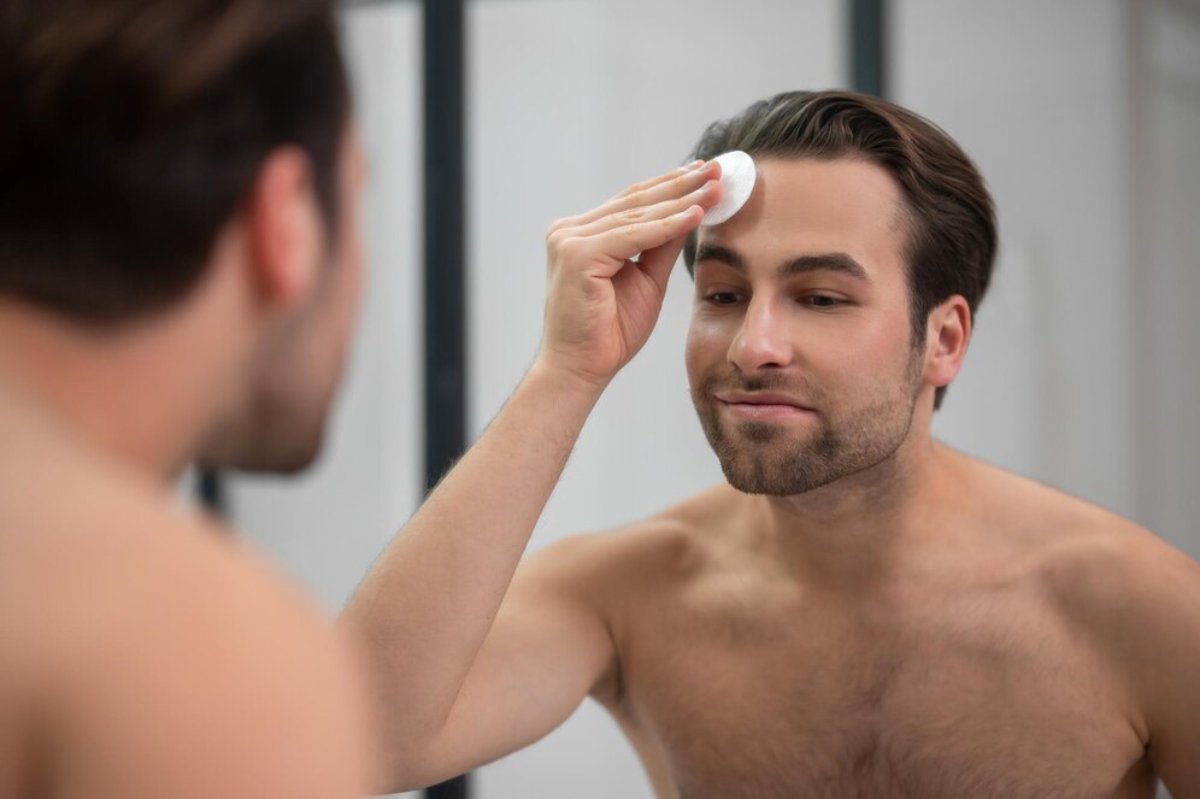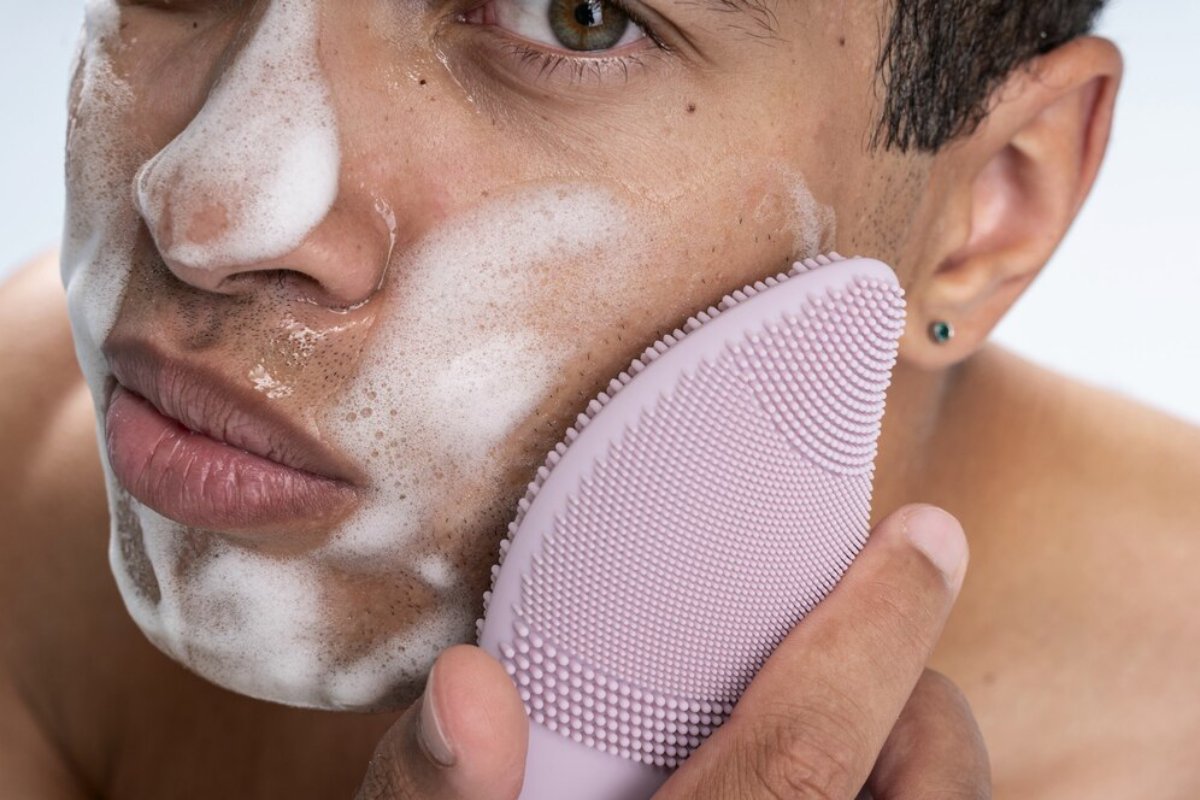
How to Use a Facial Cleansing Brush
Let’s be honest — most guys are used to the good old face-wash-and-go routine. Maybe you splash some water, rub in a cleanser for ten seconds, rinse, and call it a day. But if you’ve been noticing clogged pores, dull skin, or breakouts that just won’t budge, it might be time to level up.
Enter the facial cleansing brush — one of the most underrated skincare gadgets for men. Think of it as a toothbrush for your face: it gets deeper, cleans better, and makes your routine actually feel like it’s doing something. But here’s the kicker — it’s not just about tech. It’s about knowing how to use it correctly so it helps your skin, not irritates it.
In this post, you’ll get a no-nonsense, practical guide to using a facial brush for men, how to choose the right one, and why it’s a game-changer if you want smoother, clearer, and healthier skin.
What Is a Facial Cleansing Brush?
A Deep-Cleaning Upgrade for Your Face
A facial cleansing brush is a handheld tool — manual or powered — designed to help you:
- Clean your pores more thoroughly
- Exfoliate dead skin cells
- Prevent breakouts and blackheads
- Improve circulation and skin texture
Some are high-tech with sonic vibrations, timers, and silicone bristles. Others are simple manual brushes you control yourself. Either way, they work by boosting your cleanser’s effectiveness, giving you a deeper clean than fingers alone.
Why Men Should Use a Facial Brush
1. Deeper Clean for Thicker Skin
Men generally have thicker and oilier skin, meaning more debris builds up on the surface. A facial brush removes dirt, sweat, oil, and pollution that can clog pores — especially if you work outdoors or hit the gym regularly.

2. Better Shaves, Fewer Ingrowns
Exfoliating before shaving lifts hairs and removes dead skin cells, reducing the chances of razor bumps or ingrown hairs. You’ll get a closer shave with less irritation — something every guy can appreciate.
3. Fights Dullness and Breakouts
If your skin looks tired or feels rough, it’s probably due to a build-up of dead skin. A facial brush helps reveal fresher skin underneath, making you look more awake and feel more refreshed.
Real talk: A mate of mine started using a brush after his girlfriend swore by it. Two weeks later, his skin looked clearer, his shave was smoother, and he was low-key addicted to the massage-like feeling.
Types of Facial Brushes: Which One’s Right for You?
Manual Facial Brushes
- No batteries or charging needed
- Good control, but more effort
- Best for those who want a budget-friendly start
Electric or Sonic Brushes
- Oscillate or vibrate at high speed
- Provide consistent, thorough cleansing
- Often include timers, multiple speed settings, and interchangeable heads
Silicone vs Bristle
- Silicone: Gentler, easier to clean, great for sensitive or acne-prone skin
- Bristle: Traditional feel, deeper exfoliation, but can harbour bacteria if not cleaned properly
Tip: If you’re new to cleansing tools, start with a silicone brush — it’s softer and lower maintenance.
Work a Facial Cleansing Brush: Stepwise Instructions
Wet Your Face
Use lukewarm water to dampen your skin — not hot. Hot water strips away natural oils and can cause redness.
Apply Your Cleanser
Apply a small amount of your favourite cleanser to your face or directly onto the brush. Avoid gritty exfoliants — they’re too harsh with a brush.
Turn on the Brush (If Electric)
Use the lowest setting to start. Let the brush glide — don’t press it into your skin.

Use Gentle, Circular Motions
Divide your face into sections:
- Forehead (10–15 seconds)
- Nose and chin (10–15 seconds)
- Cheeks (10 seconds each side)
In total, about 60 seconds max. Overdoing it can lead to irritation.
Rinse and Pat Dry
Rinse your face thoroughly to remove all cleanser residue, then gently pat (not rub!) your skin dry with a clean towel.
Follow with Moisturiser
Cleansing preps your skin for moisture — don’t skip this step. Use a hydrating, non-comedogenic moisturiser to lock in the benefits.
How Often Should Men Use a Facial Brush?
- Normal or oily skin: 3–4 times a week
- Dry or sensitive skin: 1–2 times a week
- After shaving: Wait 24 hours before using a brush to avoid extra irritation
Common Mistakes to Avoid
Using It Too Often
Over-exfoliation weakens your skin barrier, leading to sensitivity and breakouts. Stick to the recommended frequency.
Using Harsh Products With the Brush
Skip anything with scrubbing particles (like walnut shell or microbeads). These combined with a brush = overkill.
Skipping Brush Maintenance
If your brush isn’t clean, it’ll just move bacteria around your face. Wash it thoroughly after each use and let it air dry completely.
Which Cleanser Works Best With a Facial Brush?
Look for:
- Gel or foam cleansers
- No microbeads or harsh exfoliants
- Ingredients like salicylic acid (for acne) or ceramides (for hydration)
Recommended picks:
- CeraVe Foaming Cleanser – gentle and effective
- Bulldog Original Face Wash – designed for men, great with brushes
- La Roche-Posay Effaclar Purifying Gel – excellent for oily or acne-prone skin
Are Facial Brushes Suitable for Every Man?
Yes — but with caution for certain skin types
- Sensitive or rosacea-prone skin? Stick with ultra-soft silicone brushes
- Severe acne or active breakouts? Avoid the brush until inflammation is under control
- Using retinoids or chemical peels? Limit brushing to avoid over-exfoliating
If you’re unsure, test once a week and see how your skin responds.
Pros and Cons of Facial Brushes
Pros:
- Deep cleanse with minimal effort
- Improved texture and tone
- Helps unclog pores and prevent breakouts
- Preps skin for better absorption of serums and moisturisers
Cons:
- Can irritate if used too often
- Needs regular cleaning
- Not ideal for very sensitive or compromised skin
Brush Up and Level Up Your Skincare Routine
A facial cleansing brush isn’t just some flashy gadget — it’s a powerful tool that, when used right, delivers visible results. Whether you want to fight breakouts, prep for a better shave, or just feel like your face is actually clean at the end of the day, this device belongs in your grooming arsenal.
But like any tool, it’s all about how you use it. Start slow, choose the right brush for your skin type, and pair it with a cleanser that works for you. Within a few weeks, you’ll notice your skin looking clearer, smoother, and more alive.


